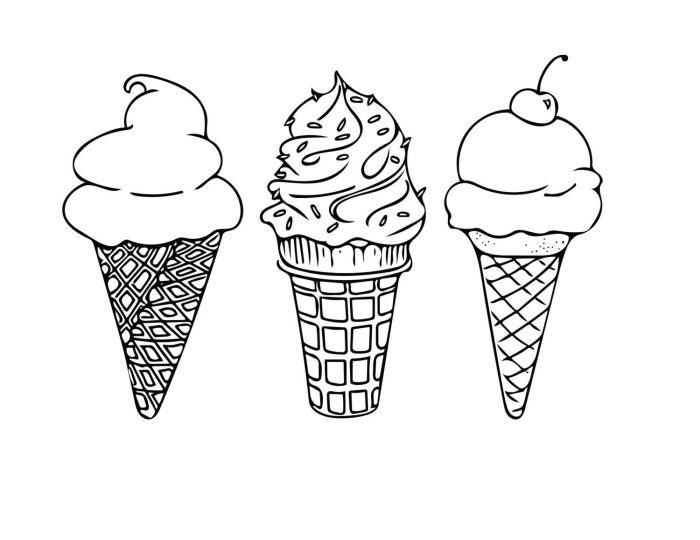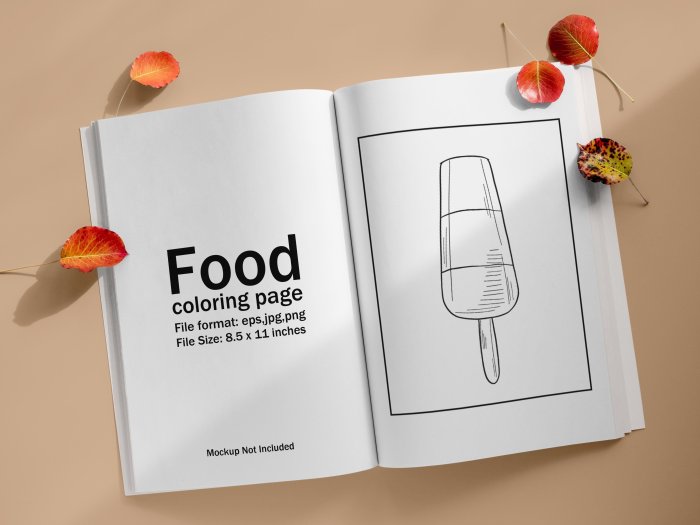Applications in Food and Beverage Presentation: Dry Ice With Food Coloring

Dry ice with food coloring – Colored dry ice adds a dramatic and captivating element to food and beverage presentations, creating a visually stunning and memorable experience for consumers. The ethereal fog and vibrant colors produced by dry ice submerged in liquids instantly elevate the presentation, transforming ordinary drinks and dishes into works of art. This effect is particularly impactful in upscale restaurants, bars, and special events, where the presentation is as crucial as the taste.Colored dry ice’s versatility allows for a wide range of applications across various food and beverage categories, each offering unique opportunities for creative expression.
Careful consideration of the food or beverage’s temperature and composition is essential for successful and safe implementation.
Colored Dry Ice in Cocktails and Mocktails, Dry ice with food coloring
The use of colored dry ice in cocktails and mocktails creates a mesmerizing visual spectacle. Imagine a dark, smoky cocktail, swirling with vibrant blue or green fog, or a clear mocktail gently releasing a plume of pink vapor. This effect is achieved by adding small pieces of colored dry ice to the beverage, ensuring the ice is submerged and not allowed to come into direct contact with the drinker’s skin to prevent burns.
The color intensity can be adjusted by using different concentrations of food coloring in the liquid. Popular choices include classic cocktails like Old Fashioneds, margaritas, and even non-alcoholic punches, where the dry ice adds a theatrical element to an already enjoyable drink. The slow dissipation of the fog creates a sense of mystery and intrigue, enhancing the overall drinking experience.
Creative Food Presentations Using Colored Dry Ice Effects
Beyond beverages, colored dry ice can be strategically employed to enhance the presentation of various food items. For instance, a platter of seafood can be dramatically presented on a bed of dry ice, creating a mystical fog that accentuates the freshness and vibrancy of the food. Similarly, a dessert buffet can be transformed into a fantastical landscape with strategically placed dry ice, adding an element of surprise and wonder.
The dry ice can be used to create a “foggy” effect around bowls of soup or even within glass serving dishes, highlighting the food within. The key is to use the dry ice sparingly and creatively to complement, not overwhelm, the presentation.
Enhancing the Visual Appeal of Desserts with Dry Ice
Desserts, in particular, benefit significantly from the addition of colored dry ice. Imagine a chocolate lava cake, steaming with a captivating purple fog, or a scoop of ice cream, nestled in a bed of dry ice, creating a chilling, atmospheric effect. The cold temperature of the dry ice helps to maintain the dessert’s temperature, preventing it from melting too quickly.
Furthermore, the contrasting colors of the dry ice against the dessert can enhance its visual appeal, making it even more enticing. However, it is crucial to ensure the dry ice doesn’t come into direct contact with the dessert for extended periods to avoid altering its texture or taste.
Right, so you’re messing about with dry ice and food colouring, making a right mess, yeah? If you’re aiming for a brown effect, ditch the artificial stuff and check out this link for some top-notch natural brown food coloring – much more sustainable, innit? Then, get back to your dry ice experiments, but maybe try a bit less this time; last time was a bit of a kerfuffle.
Dry Ice Compatibility with Various Food and Beverage Types
The successful integration of dry ice hinges on careful consideration of compatibility. Some substances react better than others.
| Food/Beverage Type | Dry Ice Compatibility |
|---|---|
| Alcoholic and Non-alcoholic Beverages (most) | Generally excellent; allows for stunning visual effects. Ensure proper dilution of food coloring to avoid intense color saturation. |
| Soups (cold or room temperature) | Good compatibility; creates a visually appealing fog. Avoid using with extremely hot soups. |
| Desserts (ice cream, cakes, etc.) | Use cautiously; brief contact enhances presentation, prolonged contact may alter texture. Maintain a safe distance. |
| Fruits and Vegetables | Limited compatibility; direct contact may cause rapid temperature changes and affect texture and taste. |
| Hot Dishes | Poor compatibility; rapid sublimation can lead to uncontrolled fog and potential safety hazards. |
The Science Behind the Color Effects

The vibrant colors produced when dry ice interacts with water and food coloring are a captivating visual spectacle, but the science behind this effect is equally fascinating. It involves a combination of physical and chemical processes, primarily focusing on the sublimation of dry ice and the interaction of the resulting carbon dioxide gas with the colored water. Understanding these processes allows for better control and prediction of the resulting visual effects.The primary driver of the colorful fog is the sublimation of dry ice.
Dry ice, solid carbon dioxide (CO2), transitions directly from a solid to a gas without passing through a liquid phase. This process, known as sublimation, is endothermic, meaning it absorbs heat from its surroundings. This heat absorption causes the surrounding water, potentially containing food coloring, to rapidly cool and condense the surrounding air’s moisture into a visible fog. The food coloring dissolved in the water then becomes suspended within this fog, creating the colored effect.
Sublimation of Dry Ice and Food Coloring Interaction
Dry ice sublimation creates a rapid expansion of CO2 gas. This gas, being colder than the surrounding air, causes water vapor in the air to condense, forming a fog. The food coloring, already dissolved in the water, is carried along with the expanding CO2 gas, creating a colored fog or smoke. The intensity of the color depends on the concentration of the food coloring in the water and the rate of sublimation of the dry ice.
A higher concentration of food coloring results in a more intensely colored fog, while a faster sublimation rate (due to factors like the size and shape of the dry ice piece) produces a denser, more visually striking effect.
Chemical Reactions with Food Coloring
Generally, no significant chemical reactions occur between dry ice (CO2) and most common food colorings. Food colorings are typically organic dyes or pigments that are relatively inert under these conditions. The color remains visually unchanged, simply being carried and dispersed by the sublimating CO2 gas. However, the extremely low temperature created by the sublimation process might affect the viscosity of some food coloring solutions, potentially slightly altering their dispersion pattern in the fog.
Factors Influencing Color Intensity and Longevity
Several factors influence the intensity and longevity of the color effects. These include:
- Food Coloring Concentration: Higher concentrations of food coloring in the water lead to more intense colors in the resulting fog. A dilute solution will produce a pale, almost imperceptible effect.
- Water Temperature: Warmer water will initially cause a more rapid sublimation of the dry ice, leading to a more dramatic, but potentially shorter-lived, effect. Colder water will slow the sublimation process, extending the duration of the colored fog but potentially diminishing the intensity.
- Dry Ice Quantity and Surface Area: Larger pieces of dry ice sublimate more slowly, providing a longer-lasting effect, while smaller pieces with a greater surface area sublimate more rapidly, creating a more intense but shorter-lived effect.
- Environmental Conditions: Humidity plays a significant role. Higher humidity leads to denser fog, enhancing the visibility of the color. Temperature and air currents also influence the dispersion and longevity of the colored fog. A still, cold environment will prolong the effect.
Scientific Principles of Colored Smoke/Fog Creation
The creation of colored smoke or fog using dry ice and food coloring relies on several key scientific principles:
- Sublimation: The direct transition of a substance from a solid to a gas phase, providing the driving force for fog formation.
- Condensation: The change of water vapor in the air to liquid water, forming tiny water droplets that scatter light, creating the visible fog. The cold CO2 gas causes this condensation.
- Heat Transfer: The endothermic nature of sublimation causes the absorption of heat from the surroundings, cooling the air and promoting condensation.
- Gas Dispersion: The CO2 gas, carrying the suspended food coloring, disperses in the surrounding air, creating the visual effect of colored smoke or fog. The density and rate of dispersion are influenced by factors mentioned previously.
Commonly Asked Questions
What happens if dry ice comes into direct contact with skin?
Direct contact can cause severe frostbite. Always use tongs or gloves.
Can I use any type of food coloring?
Liquid food coloring generally works best, but powdered can be used with careful mixing.
How long do the color effects last?
The duration depends on factors like the amount of dry ice, the environment, and the concentration of food coloring. Effects typically last several minutes.
Is it safe to use dry ice indoors?
Always ensure adequate ventilation to prevent the buildup of carbon dioxide. Never use it in an enclosed space without proper ventilation.
What are the best containers for mixing dry ice and food coloring?
Use insulated containers designed for dry ice to minimize sublimation and ensure safety. Avoid airtight containers.
